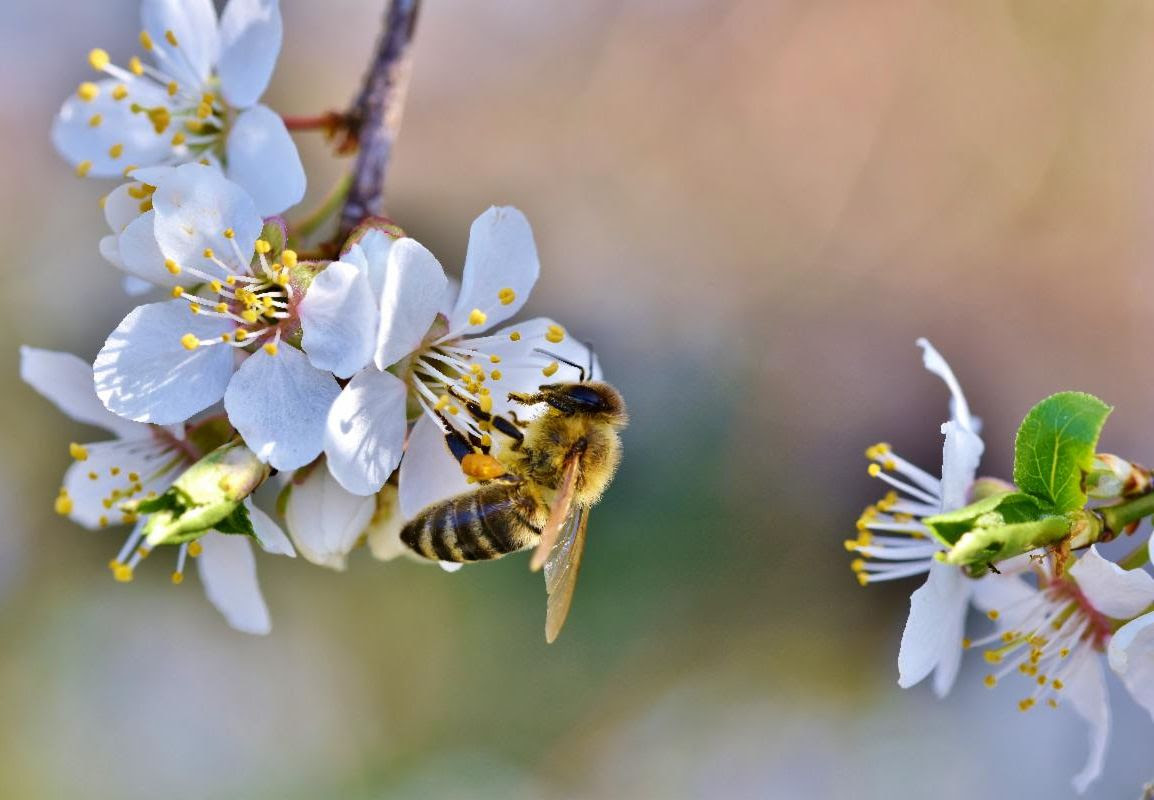
CROP PROTECTION
Almonds: Leaffooted bugs (LFB) have emerged. If you find damage from this pest, contact your GAR Bennett PCA about treatment options. LFB typically coincides with the mummy flight (May flight) of navel orangeworm (NOW). Be sure to keep an eye out for both pests. Growers are spraying herbicides and applying fertilizers as this is a key time to get nitrogen on the trees. As you plan your LFB or NOW sprays, you may want to consider adding in some foliar nutrients. This is also a great time to pull leaf samples to help fine-tune your nutritional program.
Cherries: GAR Bennett PCA’s are noting a light crop in Kern County and a decent crop within the Fresno County area. Growers are currently spraying for spotted wing drosophila (SWD) and focusing on fruit coloration. In anticipation for the upcoming rain, calcium products are being applied to help strengthen the cell wall. Either right before it rains or during, growers may apply calcium chloride products to reduce osmosis and prevent cracking. Typically, the greener the fruit the less susceptible our cherries will be to cracking. At this time, be sure to watch for cracking, mildew, brown rot and thrips.
Citrus: Petal fall is starting to be declared in Kern, Tulare and Fresno counties. Check in with your agriculture commissioner to confirm if petal fall has been declared in your district. As pet fall is declared, beekeepers have 48 hours to move bees out before thrip sprays begin. Be sure to check the “BeeWhere” program or contact your commissioner to ensure there are no bees in your area before spraying. As we begin our petal fall sprays, it’s a great time to consider running a strong nutritional program. Also review your citricola scale populations. If populations were high last season, you may want to treat for this as well. Contact your GAR Bennett PCA to discuss combining materials to apply for petal fall, thrips and citricola scale. We will also begin our first application for citrus red scale after petal fall. Be sure to keep in mind your citrus red mite populations during this time. As you design your thrip spray program, pay attention to the other pests listed above and how you may control for them.
Grapes: Growers are currently focused on powdery mildew applications. You may consider keeping intervals under 10 days and being more aggressive with applications before bloom. Aggressive powdery mildew applications may reduce the amount of mildew present after fruit set. Be sure to rotate classes of fungicides as well to help keep resistance down. We are keeping an eye out for vine mealybug and will treat at bloom or shortly after. It is imperative to maintain a good preventative program for mealybug throughout the season. Spray pheromones may be considered to control for this pest and may keep from developing resistance. Contact your GAR Bennett PCA for expert advice.
Pistachios: With possible rain in the forecast, if you’re planning to go in with a foliar spray it may not be a bad idea to add a fungicide. To prevent Botryosphaeria be sure to spray before the rains if possible. Once out of pollination, fungicides and preventative sprays will begin. Be sure to keep an eye out for LFB as well.
Walnuts: Growers are cleaning up weeds where needed. If we do get rain this weekend, blight sprays may be needed on sensitive varieties (Vinas and Ivanhoes) as well as Botryosphaeria sprays on all varieties. The 1B flight for codling moth (CM) is estimated to be around May 10. Spray timing for this flight will be based on our degree days.
Stone Fruit: Right now is a critical time for stone fruit. Katydids are active and being treated for. This treatment will coincide with the overwintering oriental fruit moth (OFM) flight. Even though you may have OFM pheromones hung in your field, you can still experience OFM damage if you have a field next door to you that does not have pheromones or if you are near almonds (an alternative host for OFM). Be sure to watch for OFM migrating to your orchard from an outside source. We are treating katydids while they are small, so we have a better chance of getting rid of them. However, katydids may continue to migrate into your field. Be diligent in watching for this pest as fruit begins to ripen. Early varieties will be ready for harvest over the next few weeks. Before harvest many of those varieties will be treated for brown rot and silver thrip, especially if weather conditions warrant treatments. Another issue we need to watch for is powdery mildew, particularly on more susceptible varieties. Be sure to keep an eye out for this. Crews are working their way through orchards, thinning on later varieties. Growers are irrigating and weed control is happening in the fields. Depending on when the fruit is harvested, growers are working on their nutritional programs. Late April to early May is a good time to take leaf samples to help establish this program.
Garlic: The dry weather has been good for garlic as there has been very little rust. If rain events do happen this weekend, be sure to keep an eye out for rust.
Onions: This crop is slightly past the half-way point of the season. Right now, growers are managing weeds and trying to control powdery mildew and downy mildew.
Tomatoes: Be sure to monitor for beet leafhoppers which are vectors for curly top virus. Growers are applying systemic insecticides through the drip tape to control for beet leafhoppers. Later in the season, watch for western flower thrips that transmit spotted wilt virus.

BEE Aware of Neighbors During Applications
CROP NUTRITION
WATER SERVICES

Resin update: Last month we told you about a resin shortage due to the ice storms in the South. It appears the situation is starting to resolve itself. Some plants are back up and running; it’s easier to get hose and drip lines in stock.
As always, look ahead to the future:
- Plan ahead
- Think about what you need in the fall or even further out
- Contact a GAR Bennett Key Account Manager to discuss your needs
COMPLIANCE
WORKER SAFETY
As the Summer months quickly draw near, our worker safety team is wrapping up annual pesticide safety trainings and gearing up for heat illness season. The California sunshine is just what our crops in the Central Valley need, so we strive to ensure safety is #1 in the fields and farms as well. Our bi-lingual trainers are calibrated so each training is streamlined with local and state guidelines. Reach out to GAR Bennett today to see how the worker safety team can assist your operation.
FOOD SAFETY
|
WHAT’S HAPPENING





